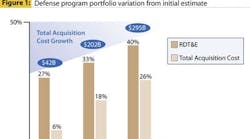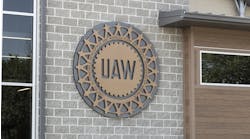Aerospace & Defense Supply Chains Prepare for Uncertainty in 2009
A&D manufacturers face uncertainty as 2009 approaches, with a new Presidential Administration and Congress soon taking hold of policy and budget decisions. Throw into the mix the current economic turmoil, and A&D manufacturers are justified in their concerns about the direction of current and future programs. These companies can expect increased scrutiny not only on the strategic value of programs, but also on efficient execution against cost, schedule and technical performance goals. Supply chain professionals must recognize the need for improved program performance and identify actions they can take to help reduce program risk.
The Obama administration is unlikely to slash defense spending in the near term, but has indicated a possible shift in priorities, which could bring new focus on major weapons programs like the F-35 Joint Strike Fighter and Future Combat System. A March 2008 General Accountability Office (GAO) report chastised the Department of Defense (DoD) for poor program performance, stating that cost and schedule outcomes have not improved since 2000 and the 72 programs assessed did not meet best practices essential for performance.
The GAO report also found variations in cost and schedule, with a total estimated acquisition cost growth of $295 billion in FY 2007.
The DoD and corporate executives are calling for improved program execution. Boeing CEO Jim McNerney stated in a July 11, 2008 Aviation Week article that his company didn't have enough accountability in its program management approach and is now bolstering its importance. The director of defense procurement, acquisition policy, and strategic sourcing issued a memorandum in August 2008 to the Army that processes such as earned value management (EVM) must be used more effectively to improve program execution.
Supply chain has a role in helping to manage program risk
Supply chain professionals can proactively contribute to improvement by bringing their expertise to the table. The following are two of the top issues and suggestions on how the supply chain organization can assist.
Eliminate inaccurate baseline estimates of cost and schedule
A July 2008 GAO review of the DDG 1000 Zumwalt destroyer program pointed to several issues across the shipbuilding portfolio, including unexecutable business cases that allow programs to start with a mismatch between scope and resources.
Here are two areas where supply chain can contribute:
- Early program involvement -- The supply chain group must be actively involved during the early stages to submit an accurate supply schedule, taking advantage of available supply chain scenario-planning capabilities, before customer signoff.
- Integrate new product introduction into the sales and operations planning (S&OP) process -- Incorporate the new product pipeline into sales and operations planning to understand the tradeoffs between business value and the cost of supply.
Reduce program cost overruns and schedule slippage
Programs with cost overruns and schedule slippage include Lockheed Martin's Littoral Combat Ship and the Armed Reconnaissance Helicopter with Bell Helicopter/Textron. The March 2008 GAO assessment found that requirements changed on 63% of programs reviewed once system development began, which contributed to poor program execution.
Areas where the supply chain organization can contribute include the following:
- Intersection with enterprise project management (EPM) -- Supply chain is responsible for executing certain work packages within the project schedule. As part of a solid EVM and project risk management process, the supply chain must reliably execute tasks, but also quickly identify design and schedule changes that contribute to program variances along with proposed mitigation strategies.
- Supplier performance and risk management -- Increased outsourcing to suppliers introduces additional program risk the supply chain must manage. It must improve a number of capabilities, including strategic sourcing and supplier contract negotiations, supplier segmentation and risk profiles, supplier development (like for small businesses, which is required by government regulation) and multi-tier visibility and change control.
Supply chain talent could become a barrier to contributing more strategically to program performance. Our April 2008 study on supply chain talent found that the supply chain organization is often viewed as a necessary evil instead of as a strategic partner. It often has insufficient span of control in areas affecting supply chain success, such as new product introduction and post-sales support.
If A&D is serious about improving program performance, then the supply chain group must have a strategic seat at the table for business planning as well as the organizational talent and tools required for success.
Michael Burkett is Vice President at AMR Research. www.amrresearch.com
Interested in information related to this topic? Subscribe to our weekly Value-chain eNewsletter.




